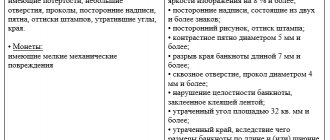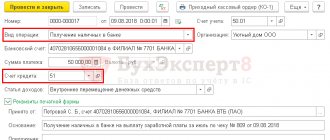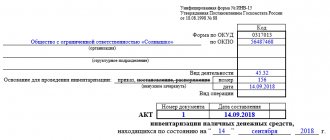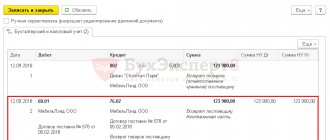Cash collection is often referred to as the procedure of transportation, the physical movement of cash from one place to another.
A typical example is the transfer of cash proceeds from retail outlets to the servicing financial institution. As a rule, in such situations we are talking about transporting fairly large amounts of cash.
This is a serious and responsible operation, therefore it is always carried out according to certain rules, strictly regulated by the regulatory documents of the Central Bank of the Russian Federation.
Cash collection involves performing specific actions.
This applies to the procedure itself, its documentation and accounting.
What is it and what is it for?
Cash collection is a complex concept that means a set of interrelated measures for the physical movement of cash between individual business entities (organizations), their structural (separate) divisions and servicing banks.
Transportation of cash is carried out by authorized collectors - specialists with the necessary professional training.
The actions of all participants in this procedure - cashiers, collectors, bank employees - are subject to the established procedure regulated by Directive of the Central Bank of the Russian Federation No. 3210.
As a rule, collectors are contacted for the following reason - ensuring the safety of cash during its transportation.
Cash collection is a guarantee of its safety and protection from external attacks.
In fact, the transportation of cash by armed cash collectors is the priority and safest way to physically move it from the cash desk of the enterprise to the servicing bank.
The cash collection procedure allows you to successfully solve the following tasks:
- Physical movement (transportation) of cash proceeds of a commercial enterprise from a retail outlet to a servicing bank.
- Delivery of the required amount of cash from a financial institution to the cash desk of a business entity for the next payment of salaries to its employees.
- Transportation of cash between separate structural divisions (branches) of a particular bank.
- Regular replenishment of ATMs with the required amount of paper bills with the generation of a report on the current state of cash counters.
- Periodic withdrawal of cash proceeds from payment terminals that accept cash.
- Safe transportation of material assets and documentation.
The cash collection service, which implies the subsequent crediting of transferred funds to a bank account, is provided legally in the following ways:
- Directly through bank tellers.
- With the help of a collection service authorized to transport cash. These may be collection departments at servicing financial institutions, as well as private security structures that have the legal right to accompany the transportation of cash.
- Through the RosInkas service, a collection agency that has a special permit from the Central Bank of the Russian Federation.
- Through the federal postal system.
- Directly through automatic safes.
Is it mandatory for an LLC?
Current legislation - regulatory documentation of the Central Bank of the Russian Federation - provides for a requirement to limit the cash balance of business entities.
We are talking about setting a limit on the total amount of cash remaining in the organization's cash desk at the end of each operating day.
This condition applies to all business entities carrying out incoming and outgoing transactions with cash, except for individual entrepreneurs and organizations related to small enterprises.
It should be noted that business entities that fall under the exceptions have the right to limit the cash balance, but not the obligation.
If an individual entrepreneur/small enterprise nevertheless decides to exercise this right, compliance with the established standard (limit) will be mandatory. Read about the limit for small businesses here.
Exceeding the limit cash - exceeding the established limit - is subject to withdrawal from the cash desk of a business entity and mandatory transfer to the servicing bank with its subsequent crediting to the organization's current account.
Cash collection is considered the safest method of physically moving cash from a business's cash desk to a servicing financial institution.
If we are talking about significant amounts, it is recommended to use the services of professional cash collectors who guarantee the safety of the money being moved.
Business entities are allowed to accumulate and retain excess cash in excess of the limit only on paydays and holidays/weekends.
Violation of these rules results in the imposition of penalties on the perpetrators. The fine for officials ranges from 4,000 to 5,000 rubles, for organizations (enterprises) – from 40,000 to 50,000 rubles.
Cash collection
Regulation of the Bank of Russia dated January 29, 2018 N 630-P “On the procedure for conducting cash transactions and the rules for storage, transportation and collection of banknotes and coins of the Bank of Russia in credit institutions on the territory of the Russian Federation”
The cashier prepares cash and documents for the arrival of collectors:
- transmittal sheet,
- invoice for the bag,
- receipt for the bag.
The collector is required to present the cashier with an identity card and a power of attorney for cash collection. He gives the cashier his appearance card and empty bag.
The cashier gives the collector a sample of the seal, a bag with cash, an invoice and a receipt for the bag. The collector checks the integrity of the bag and seal, the seal's compliance with the existing sample, the correctness of filling out the invoice for the bag and the receipt for the bag.
The cashier of the organization fills out the appearance card. If there is an error on the card, the incorrect entry is crossed out and certified by a signature. The collector is prohibited from making entries on the appearance card.
The collector checks the correspondence of the amounts of cash indicated on the appearance card, the invoice for the bag and the receipt for the bag, as well as the bag number indicated in these documents.
When accepting a bag of money, the cash collector signs the receipt , affixes a stamp, the date of receipt and returns the receipt to the cashier. The collector takes the deposit card, the waybill and the bag with the money and the conveyance slip with him.
If the collector discovers a violation of the integrity of the bag or seal, or the statement was drawn up incorrectly, then all the shortcomings must be corrected with him, or the collector leaves and arrives again, at a time convenient for him. In the appearance card, in the “Repeated arrivals” section, the cashier of the organization must make an appropriate entry.
If a collector comes for cash, and the cashier refuses to give him cash, he must write on the appearance card about the refusal and its reason and certify the entry with his signature.
Rules and procedures for cash in an enterprise
There are generally binding legal norms that clearly regulate the procedure for cash collection in an organization.
These rules, as mentioned earlier, must be strictly observed by all participants in this process - the cashier of the enterprise transferring cash, and the collector delivering the transferred money to the bank.
In addition, collection rules may be regulated by a signed agreement on the provision of collection services, which, for example, provides for the frequency of transfer of funds and other specific conditions.
The cash collection procedure itself involves the sequential performance of the following actions by its participants:
- The transferred cash is prepared by the cashier of the business entity for dispatch. At this stage, a thorough counting and packaging of funds are carried out, which are then placed in bags. A set of necessary documents is prepared in several copies. The completed papers are also placed in collection bags with money. This stage ends with the sealing of bags to be handed over to collectors.
- Cash packed in bags is handed over to the collector. This action is performed by the cashier of the transferring organization in a special room. The auditor, financial controller, chief accountant, and head of the organization have the right to control this procedure. The cashier checks the identity and papers of the collector, enters information into the appearance card, provides a sample of the seal, and gives the bag with money and documentation to the collector. The collector verifies his identity, presents the necessary papers to the cashier and returns empty bags, accepts bags with money, checks the serviceability of seals, verifies document data, signs and dates the receipt, and puts a stamp.
- Transportation (physical movement, transportation) of transferred funds directly to the servicing bank. This procedure is carried out by an authorized collector along a route developed and approved in advance.
- Delivery and acceptance of bags with cash at a financial institution. The collector transfers the bags of money to the servicing bank, which duly accepts these funds. The acceptance procedure is carried out according to established rules. If it is completed successfully, the collector’s full financial responsibility for the transferred money ceases.
- The transferred cash is accepted and received by a bank employee who checks the bags, the integrity of the seals, and the correctness of the information in the accompanying papers.
Documenting
In order to correctly transfer cash to the collector for transportation to the bank, the cashier draws up the following documentation:
- The accompanying statement in three copies (one - in the bag, the second - to the cashier, the third - to the collector);
- a register of completed transactions (placed in a bag), the amount of which must correspond to the amount of the statement;
- money bag invoice;
- receipt for money bag.
The collector verifies his identity, presents a power of attorney, and gives the cashier an appearance card to fill out.
The cashier enters the necessary information into the appearance card and returns it to the collector. Subsequently, this card is checked by a bank employee and compared with the cash order.
Accounting and postings
In the accounting of a business entity that transfers cash to the bank through collection, certain correspondence accounts are used, accompanied by the preparation of the necessary documents:
| Operation | Debit | Credit | Document |
| The cashier handed over the cash to the collector | 57 | 50 | RKO, receipt |
| The collected amount is credited to the bank account | 51 | 57 | Bank account statement |
| The corresponding commission has been paid to the bank | 91 | 51 | Bank account statement |
Registration in accounting
After depositing the cash for collection, the cashier is left with a receipt for the bag, on the basis of which a cash receipt order (COS) is drawn up. The Bank of Russia in the Letter of the Central Bank of the Russian Federation dated October 16, 2015 No. 29-1-1-OE/4065 explained how to fill out the cash register for the collected amount of cash:
- In the “Issue” line, the full name of the cashier who generated and handed over the bag of cash to the collector is indicated.
- In the “Attachment” line, indicate the details of the primary document (date and number) - the receipt for the bag.
The collector does not sign the cash settlement; his data is not indicated in the order. The cashier also makes an entry in the cash book based on the issued consumables.
In accounting, the following entries are made:
Debit 57 “Transfers in transit” Credit 50 - funds were transferred to the collector for crediting to the current account (based on the receipt for the bag).
Debit 51 Credit 57 - money has been credited to the current account (based on the statement).
Cash collection services are classified as other expenses in accounting.
Debit 91.2 Credit 60 - collection services are reflected.
Debit 19 Credit 60 - VAT on collection services is reflected.
conclusions
Thus, the cash collection procedure of a business entity is carried out in strict accordance with the procedure provided for both by the generally binding norms of the Central Bank of the Russian Federation and by private agreements concluded between the enterprise and the collection service (serving bank).
Compliance with the established sequence of necessary actions is of great importance, since the participants in this procedure are financially responsible entities.
Important points are correct documentation and proper accounting.
Collection procedure
Cash collection is carried out in the manner established by the Regulation of the Central Bank of the Russian Federation dated April 24, 2008 No. 318-P. For transfer to the collector you should prepare:
- Cash,
- Transmittal sheet for the bag in which the cash is transferred (form 0402300),
- An invoice describing the contents of the bag,
- A receipt that serves as proof of acceptance of the bag with money by the collector.
The delivery of money to the collector occurs as follows:
The arriving collector must present his identification card and power of attorney for collection; he gives the cashier an appearance card and an empty collection bag. In turn, the cashier hands back the bag with the money and the transfer note inside, the invoice and receipt for the bag and a sample of the seal.
On the appearance card, the cashier indicates the time the bag was returned, its number, the amount of money in the returned bag, and puts a signature. All card data must correspond to the data on the invoice, statement and receipt, so all documents are carefully compared with each other.
The collector checks the integrity of the seal and bag, the correctness of the accompanying documents and the appearance card. If violations are found, they are corrected by the collector, or he comes again after some time, which is reflected in the appearance card. Particular attention is paid to the correct sealing of the bag - if it is possibly opened by strangers, traces of breaking the seal should be obvious.
The collector signs the receipt, puts on it the date of receipt of money and his stamp. The receipt remains with the cashier.
Special cases
If the money was transferred to collectors in compliance with all the rules, but the amount did not reach the bank, who is responsible?
Safety
Despite the high level of protection, there is always a risk of an attack on the collector or an accident on the road with subsequent destruction of funds (for example, if there was a fire during the accident). Typically, such cases are preliminarily reflected in the contract, which provides for force majeure provisions. As a rule, self-respecting banks insure such cases, and therefore compensation is carried out at the expense of the insurance company.
Shortage
If a surplus or shortage of funds is detected. It is necessary to draw up a recalculation act in triplicate (the form for them is arbitrary). Signatures are provided by the persons who took part in the recalculation. One copy of the document is kept by the cash register manager, the second is given to the organization, and the third is given to the collectors.
In the agreement for the provision of collection services for payment terminals and cash desks, banks indicate that they are not responsible for shortages or surpluses found in the bag if the packaging was carried out in accordance with all the rules and no damage was recorded anywhere.
In the same way that a client demands that a credit institution comply with its obligations regarding the recalculation and storage of valuables, requirements are formed on the part of the banking institution regarding the provision of collection in accordance with established rules:
- Pre-agreed schedules for the withdrawal of funds and their transportation must be strictly implemented and agreed upon at the stage of concluding the contract.
- A company that uses collection services must guarantee unhindered access to the place where money is transferred.
- The collector must present identification before starting the procedure.
- Transportation of valuables is carried out only on special transport and in special sealed bags.
Reference!
If the cash shortage recurs, the bank may invite the client to personally attend the recalculation. Collection will ensure the safe transportation and storage of money in the account. This is especially important for companies with large revenues that operate in areas with high crime rates or where there are competitors.






